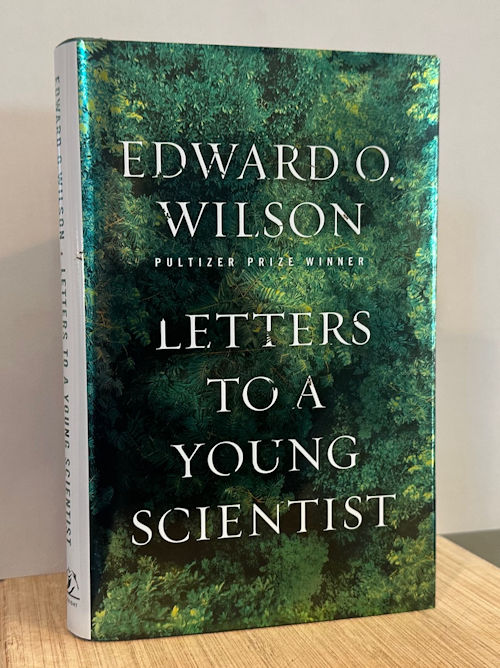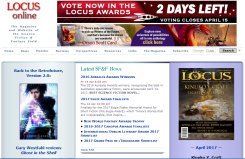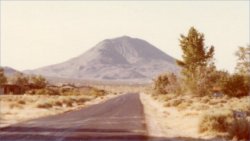(Liveright, 2013, 244pp, including 4pp of acknowledgements and photo credits)
This is one of Wilson’s later, perhaps lesser books, compared to his earlier tomes like ON HUMAN NATURE and CONSILIENCE. It’s more like THE ORIGINS OF CREATIVITY and GENESIS (both reviewed on this blog): a little meandering, repeating points he’s made elsewhere, and semi-autobiographical. Those are not problems if you haven’t read many of his books; there is still enough wisdom in this book to make it worth reading.
So this is a mixture of genuine advice to people entering science, along with discussions of science, anecdotes about particular projects he’s supported, and so on. The advice comes mostly in Sections I and V; stories about studies around the world pepper the narrative; and a key chapter is 4, about basic scientific principles and the two big questions of religion and philosophy.
*
Prologue: You Made the Right Choice, p13
Stay on the path: the world needs you, badly. We live in a techno-scientific world, with knowledge doubling every 15 to 20 years. Science and technology are open to everyone, hold no long-lasting secrets. Example of Linnaeus, who launched a classification and naming process of species in 1735. No one knows how many species there are. Most remain unknown to scientists. The problem of tracking all this is now in an online Encyclopedia of Life, begun in 2005. [[ Wikipedia; the site itself can be slow. ]]
I, The Path to Follow
One: First Passion, Then Training, p21
Brief autobiography: growing up in Alabama, Boy Scouts, University of Alabama, obsessed with snakes and ants; Harvard in 1951 as a PhD student. Lesson: put passion ahead of training. Follow it as long as it lasts. Switch if a greater love comes along. Don’t just drift through life.
Two, Mathematics, p27.
A strong math background does not guarantee success in science. If not strong, don’t worry. Examples of simple problems about ancestors and lily pads in a pond. Author didn’t get to calculus until age 32. You can gain fluency at any age, and largely by self-instruction. Exceptional math fluency is required only in a few fields. Much of it is imagination. Newton and his prism; Darwin and his voyage. Darwin noticed many things around the world not consistent with the Noah story. He deduced evolution, and then its cause. Discoveries rarely come from math; they come from field observations, or during random moments, like talking to one’s spouse. Ideas in science come from studying the world for its own sake. Principle Number One: it’s easier for scientists get help from mathematicians, than for the latter to find scientists to use their equations, p19. Especially true in biology. Principle Number Two: No matter what your level of mathematical competence, there’s a field of science appropriate to it.
3, The Path to Follow, p43.
How to orient yourself among your colleagues. Look for a field of study that is sparsely inhabited. The quickest way to advance. Principle 3: march away from the sound of guns, p46. Become a world-class expert in your one particular field. Principle 4: the more difficult a problem, the more likely the importance of its solution. Examples of really big projects. Discoveries are made in two ways. A problem is identified, a solution sought. Or: study a subject broadly and look for unknown phenomena. This is Principle 5, p48. There are certain ‘model species’. E. coli, etc. Example of deep study, p51. Finding a specimen, looking it up. Realizing it’s new.
II, The Creative Process.
4, What is science? P55
“It is organized, testable knowledge of the real world, of everything around us as well as ourselves, as opposed to the endlessly varied beliefs people hold from myth and superstition.” It is “…increasingly the habit of educated peoples…” What about fact, hypothesis, and theory? The terms are easily misapplied. (Example about ants, how they remove the dead from the nests. How do ants know when another is dead? Presumably some chemical, of decomposition, or absent from a living body. Author procured various decomposition substances and tried them out. Reached a couple conclusions. But more experiments with other species would be needed before establishing a fact.)
The scientific method? Details p58. Competing hypotheses. What it means to be a fact, 59b. When research is incomplete, the idea is a theory. Archimedes and eureka. On a grander scale, Darwin and evolution: so much evidence it can be called a fact. Certain processes that are defined and consistent can be called laws, mostly in physics and chemistry. Biology? Author suggests two laws. First, that all life is obedience to physics and chemistry; there is no ‘elan vital.’ The second, that all evolution is due to natural selection.
There are many connections between the sciences, and perhaps to the social sciences and humanities and arts; this is consilience. Science is not just “another way to knowing”; All the creation stories of organized religions have been tested in the real world and found wrong. P63. We cannot solve the mysteries of the universe and the human mind by intuition. Science has extended our senses, and our knowledge of what exists. We once thought earth was at the center of the universe, and that the human race arose full-blown in its present form; in both cases, now, we know better. And we have begun to answer the two great questions of religion and philosophy: where do we come from? And what are we? Science is not closed to proof of some supernatural entity. But such attempts have failed, or via the negative proposition: that because we don’t know everything, God must have done it. Examples. These hypotheses are vulnerable to decisive disproof. And that’s been the history of science. Keep an open mind to new phenomena, but testable truth is the only coin of the realm.
5, The Creative Process, p69
How scientists engage in visual imagery. Learn to daydream, to engage in fantasy. Imagine yourself in the future, at the end of your career; what would you like to look back on? Example of author having dinner with Michael Crichton. About the novel Rising Sun, and controversy. And the science behind Jurassic Park. The creative processes of novelists and scientists are close.
6, What It Takes, p77
While some get their Ph.D.s and stop research, author hopes you will aim to remain creative. Aim to have some discovery or advance attributed to your name. it doesn’t take genius to do that. An ideal scientist isn’t too bright, or they’d become bored. A strong work ethic is essential. Author planned his career for 60 hour weeks, 80-81. Real scientists don’t take vacations. Stay restless. Another quality to try is entrepreneurship. Perhaps by doing lots of quick, easily performed experiments. Author gives several examples of his own, p84-5. Do not linger with any one technology. Use but don’t love technology.
7, Most Likely to Succeed, p89
How are born scientists discovered? Few scientists are honest about recounting the motivations behind their careers; they are too reticent. Author recall an Alabama school to encourage promising high-schoolers. Now the conventional wisdom is that it takes teams, sometimes big ones, to achieve breakthroughs. Author dissents from groupthink. Individuals are more likely to be passive-aggressive, or introverts; to be dreamers, not doers. Still, the frontiers of science often require collaborators.
[[ It’s true enough that many scientific papers currently have dozens, even hundreds, of co-authors, because of the time it takes long experiments to be performed, or the elaborate machinery involved in, say, physics experiments. ]]
8, I Never Changed, p95
About the author’s discoveries. He was an only child. He had a summer in DC all to himself. Movies, books, collections. Butterflies and ants. Books about butterflies. The museum of natural history. Then back to Mobile and the swamps. All of this before his snake period.
9, Archetypes of the Scientific Mind, p101
We understand more deeply as we mature, but our emotions first fire during childhood and adolescence. A scientist is first a poet, then a bookkeeper. Consider the psychology of innovation. The five components of personality; scientists likely more prone to introversion, toward conscientiousness and openness to experience. You’ll become most devoted through images and stories that affected you early. Archetypes. The journey to an unexplored land. Search for the Grail. Good against evil. In science the evil is disease, or global warming. These themes are those of great dramas and novels.
10, Scientists as Explorers of the Universe, p107
About the Explorers Club of New York, founded 1904. Author was elected honorary member in 2004. What remained to be discovered was the biosphere. In 2009 he gave the main address. In 2006, an ‘expedition’ to explore biodiversity — in Central Park. In 2003, these ‘bioblitz’ events began with samples of soil and water. Everyplace on earth is seething with plants, animals, and microorganisms. Consider a rotting stump. Details. Bacteria. Viruses. The stump is a miniature ecosystem. Most of it unknown.
III: A Life in Science
11, A Mentor and the Start of a Career, p119
At 18, author corresponded with Ph.D. student William L. Brown at Harvard, the leading world authority on ants. Who encouraged him to get busy. Dacetine ants. Example of detail, 122. Over a decade they established their evolutionary history. Ants, like other species 125t, are crucial for the entire biosphere.
12, The Grails of Field Biology, p127
His personal grail became a particular primitive species, Daceton armigerum. Thus his trip to Surinam (described in the opening pages of the book). He found an entire colony. Later, in Sri Lanka, looking for a variety that might be extinct. He finds them. He wonders how their social system came to be, p132. He searches for primitive species for clues. Such ants had been found in SW Australia, but in an uncertain location. He travels there in 1955, and the age of 25, with two fellows. They find other ants, but not the ones they were looking for. Later, Australians looked for them. They find the dawn ant. A winter species. Though not as primitive as they’d hoped. They study fossils. A 90myo piece of amber is found, in New Jersey. Wasplike. A missing link. More ancient fossils are later found. Then in 2009 a German entomologist finds a live species in the Amazon, and brings it to Harvard. An earlier branch than even the dawn ant.
13, A Celebration of Audacity, p143
Diagram of tree of life, 142. Six years before entomologists worked out the family tree, or phylogeny, of all the living ants. Author had retired in 1997. But he takes on one more student. For a DNA sequencing project. She does most of it by herself, by 2007.
14, Know Your Subject, Thoroughly, p149
With examples of Steven Weinberg, and two scientists described by James D. Watson. Quotes. And the author, pursuing taxonomy. More than just stamp collecting. Culminating in a 2003 book. How he discovered fire ants were enemies of another species. And another, during an expedition to the South Pacific in 2011. Vanuatu. New species forming. And on New Caledonia, where they discovered a recently-invasive species. The ‘little fire ant.’ One of many invasive species around the world.
Part IV: Theory and the Big Picture
15, Science as Universal Knowledge, p169
The only way to understand the universe and all within it is through science. Even social sciences and the humanities, which are gradually converging. The humanities limit thought to that which is human, which traps them inside a box; how do we imagine extraterrestrial intelligence? [[ Insightful point; this is where science fiction comes in. ]] Try a thought experiment. Imagine a termite with brains the capacity of humans. Insect brains can be complex; examples. So here’s a story: Supertermite Civilization on a Distant Planet, p172. No matter how different its culture might be, its science would be closely similar. But we’d likely find each other morally repugnant. But this example isn’t imaginary; it’s built on real termites in Africa.
16, Searching for New Worlds on Earth, p177
It’s useful for making discoveries to spot blank spaces in current knowledge. Other fields use similar heuristics for making discoveries. Chemists and molecules. Astronomers and physics across 35 powers of magnitude. The variety of life on earth. E.g. Yasuni National Park in Ecuador. Opposite extreme: McMurdo Dry Valleys in Antarctica. And other areas still unknown. Seamounts. Table of species counts, p184. How little we know life on this planet. Our long-term survival depends on understanding more about life on earth. So again: you are needed.
17, The Making of Theories, p189
The best way to explain this is by example. One, of chemical communication. Pheromones. Needed a way to coordinate much data. What kinds of molecules served which functions, and why those and not something else? The theory: shaped by evolution. Outline. There are also alarm substances. The two varieties of chemicals should have different properties, in terms of how long they last, etc. Example of crushing a bee. Next: attractants, sex pheromones. Finally, identification substances. To id other ants. Then calculate how each would expand in space. The design of the molecules. How size affects dispersal, etc. Then chemistry. Etc. Author and team reached a certain point and quit. Years later someone else finished and explained their failure. The study of ecosystems continued…
18, Biological Theory on a Grand Scale, p205
Second example. From biogeography. Author studied evolution early on. He read Ernst Mayr’s 1942 book. Later, ideas about how mammals spread around the world. How some hardy species spread and took over from former dominants. There were different stories for reptiles, etc. And a grand theory for fauna. The two Americas were separated but developed similar species, an evolutionary convergence. The southern kingdom declined, while the northern one lived on. Because the two areas became connected and similar organisms met. Panama. And so on; counts of families, equilibrium. The northern animals mostly prevailed. No one is sure why. Success and dominance. The north, being part of the World Continent Fauna, had developed more hearty species. Testing of this idea has just begun.
19, Theory in the Real World, p219
Science seems so large, competition so tight, but there are plenty of entrances for new researchers. In science, every answer creates many more questions. Newton’s shoulders and giants. Author recalls meeting Robert H. MacArthur in 1959. Later, George Gaylord Simpson. Who was old and getting feeble. Simpson approved of the term ‘evolutionary biology.’ In 1960. They discusses island equilibria. Island biogeography. A book in 1967. How to test it? Solution occurred to author: insects, on any of thousands of small islands. He settled on the Florida Keys. The Dry Tortugas. Each hurricane sweeps them clean of life. But he needed something larger and more controllable. He turned to nearby mangrove islands, where he and a student could remove the animals and fumigate the insects. After two years of work, the data fit the equilibrium model. They stood on the shoulders of giants.
Part V: Truth and Ethics
20, The Scientific Ethic, p237
Finally, some advice on proper behavior. About your relationships with other scientists. You’ll encounter rivalry and jealousy. Original discoveries are all that counts. Proper credit for them is a moral imperative. Bestow credit where it is deserved, and expect the same from others. When you make a mistake, admit it and move on. Fraud will never be forgiven. Be cautious and honest. A scientific career is above all a pursuit of truth.






